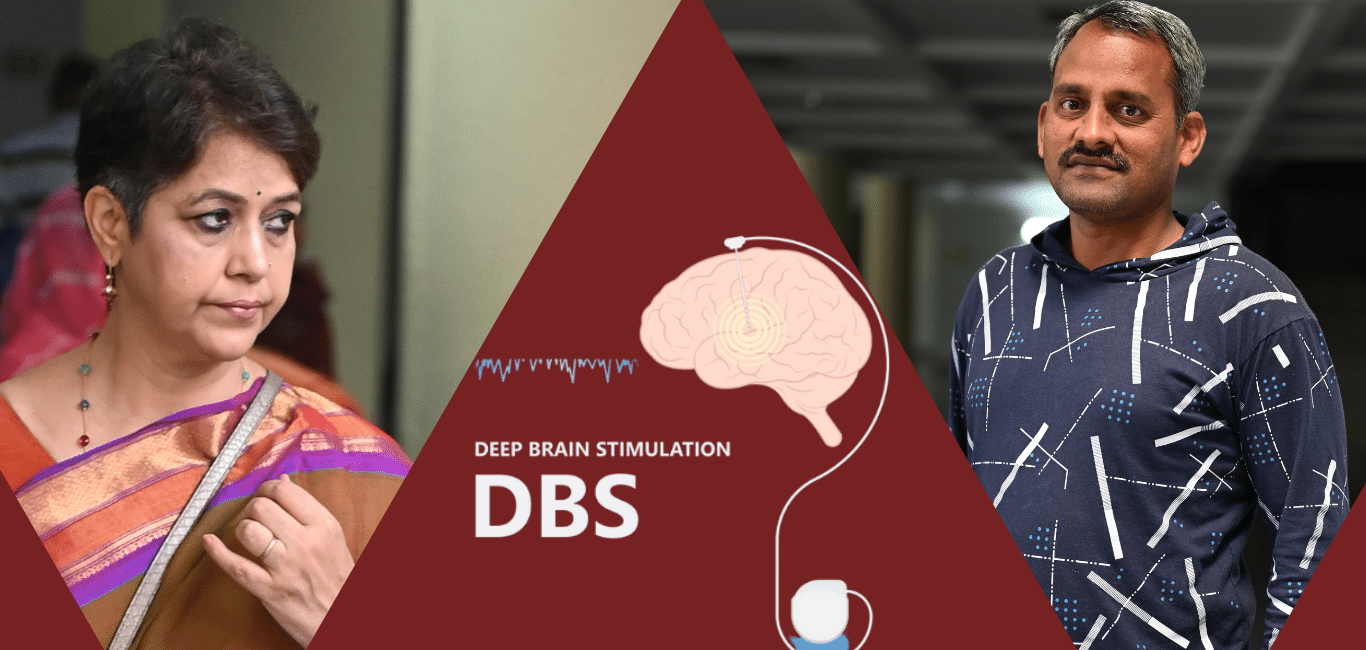
“A 32-year-old man came to us with an unsteady gait and poor coordination of limbs. He was swaying and frequently tripping,” Dr Priya Treesa Thomas, additional professor of psychiatric social work at the National Institute of Mental Health & Neurosciences (NIMHANS), Bengaluru, tells Happiest Health. His job required much moving around, and his noticeable quivering led his colleagues to think he was coming to work drunk. “On detailed examination, he was diagnosed with a movement disorder called ataxia,” says Dr Thomas.
Movement disorders (MD) are like hiccups – uncontrollable. However, unlike hiccups, they have complex neurological causes. Although the symptoms may subside in a few seconds or last for hours, the condition worsens over time, progressing to aberrant twitching, jerking, and shaking of the body, interfering with speech, movement and the body’s balance.
However, not all movement-related conditions are movement disorders, says Dr Pramod Kumar Pal, professor, and head of the Parkinson’s and Movement Disorder Department of Neurology at NIMHANS. “A few other conditions that show similar signs like seizures or epilepsy, one side weakness, and walking difficulty should be ruled out,” he says. These conditions could arise due to joint problems or damage to muscles and nerves, according to Dr Pal.
Identifying movement disorders
Movement disorders encompass a broad spectrum of categories, and the type of disorder can vary. Dr Pal explains with an example. “Consider a person’s inability to pick up a pen or a cup. This could arise due to excessive movements like trembling or tremors or due to rigidity or lack of movement, where the hand does not move the way we plan,” he says.
Excessive blinking, face spasms, regular repetitive shaking of hands and legs, sudden jerks in certain body parts, and imbalance while walking are signs of excessive movement. In rare cases, persons may exhibit involuntary grunting or neck movements. Dystonia (uncontrollable muscle contraction), writer’s cramps and ataxia are excessive types of movement disorders. For instance, the 32-year-old person who consulted Dr Thomas at NIMHANS was diagnosed with ataxia as he had difficulty with coordination and balance.
To explain the other type of movement disorder arising from lack of movement, Dr Pal gives the example of a 48-year-old banker. “He was diagnosed with early-stage Parkinson’s disease and could not count notes by hand or type due to intermittent shaking of his right hand,” says Dr Pal. His relatives had observed that his walking pace had slowed down, arm swing had reduced, and his steps had become shorter. Besides, he was taking a long time for activities like cooking and bathing. “This is the other end of the spectrum, where the movements begin with slowness and paucity, and gradually the person loses mobility,” Dr Pal explains.
Movement disorders bring several challenges to the individual in their daily activities. “Owing to the physical challenges, the person experiences psychological, social, and emotional vulnerability. These factors add to the progressive nature of this condition, and they require long-term care,” says Dr Thomas.
Dr Pal says that 10 to 15 per cent of movement disorders could have genetic and hereditary roots. Sometimes a brain infection, frequent exposure to heavy metals like manganese and certain chemicals (for those working in mines and chemical factories), conditions like stroke, and epilepsy can also lead to movement disorders, he adds.
Managing the condition
“Most of the time, we will not be able to identify the exact cause for movement difficulty,” says Dr Pal. However, early, and accurate diagnosis, exercise and some therapies can help manage the condition and get the individual back on track. “After regular counselling and medication for a few months, we noticed a significant improvement in the 48-year-old banker, and now he is back to work. He is almost symptom-free,” says Dr Pal.
Dr Thomas adds that it is equally important to explore psychosocial intervention. Physical and occupational therapies, counselling, yoga and exercise keep persons motivated to manage their condition.
Addressing societal challenges
Lack of support and concern can affect the psychological well-being of the person, say experts. For example, the 32-year-old man who consulted Dr Thomas was stigmatised for his stupor and even lost his job. Family members play an essential part in the therapy and management of movement disorders. “We need to have systems that will help the families by providing them with the right information and rehabilitation support,” says Dr Thomas.
She adds that awareness in society and support for the psychological well-being of persons with movement disorders can go a long way in improving their quality of life.
(This article is the second of a series of articles for World Movement Disorders Day (29 November) to spread awareness about movement disorders.)

















